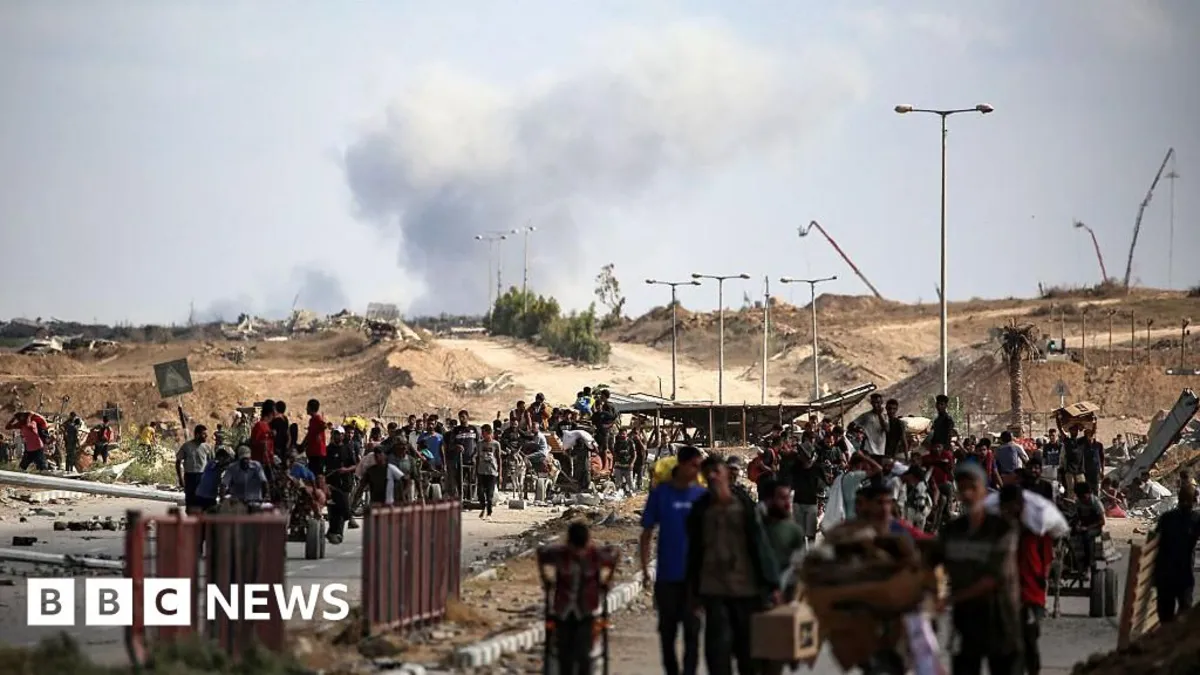
Negotiators from Israel and Hamas are currently convening in Sharm El-Sheikh, Egypt to engage in indirect discussions aimed at resolving the ongoing Israel-Gaza war. This marks the closest both parties have come to reaching an agreement since the conflict erupted two years ago. Central to these discussions is Donald Trump's 20-point peace plan, which has received partial agreement from Hamas and full backing from Israel. However, the plan serves primarily as a framework and is relatively brief, leaving several significant sticking points that need to be addressed for a comprehensive resolution.
One of the most critical aspects of Trump's proposal is the structure for hostage release. The plan stipulates that all remaining hostages must be released within 72 hours of an agreement being reached. Reports suggest that approximately 48 Israeli hostages are currently held in Gaza, with 20 believed to be alive. Over the weekend, Trump expressed optimism that the hostages could be freed soon, while Israeli Prime Minister Benjamin Netanyahu indicated they might be released before the Jewish holiday of Sukkot, which concludes on October 13th. Although Hamas has tentatively agreed to the hostage exchange formula, they have indicated that certain conditions must be met. As hostages represent Hamas's primary leverage, it remains uncertain whether they will release them without securing other aspects of the deal first. The lack of trust between both sides complicates matters, especially given recent tensions that arose when Israel attempted to assassinate Hamas's negotiating team through an airstrike in Doha.
Throughout the conflict, Israel's primary objective has been the dismantling of Hamas. Netanyahu has consistently stated he will not cease operations until the group is eliminated. A pivotal point in Trump's peace plan mandates that Hamas must disarm, a demand the group has historically resisted, insisting that disarmament will only occur once a Palestinian state is established. In their response to the peace plan, Hamas notably did not address the disarmament clause, raising doubts about any shift in their position. Netanyahu has reiterated his commitment to disarming Hamas, declaring that Gaza will either be demilitarized "the easy way or the hard way."
Trump's plan also outlines that Hamas will not have a role in the future governance of Gaza, which is to be overseen by a temporary transitional body of Palestinian technocrats. This body will be supervised by a Board of Peace chaired by Trump himself, along with former UK Prime Minister Tony Blair. Eventually, governance is intended to shift to the Palestinian Authority (PA). Despite Netanyahu's agreement to Trump's entire 20-point plan, he has expressed reservations regarding the PA's involvement in Gaza's governance, which could alienate ultranationalist hardliners within his coalition. Many of these hardliners advocate for retaining control over Gaza and the reconstruction of Jewish settlements in the area. Meanwhile, Hamas's response indicates a desire to maintain some role in Gaza's future as part of a unified Palestinian front, a stance that may be unacceptable to both Trump and Israeli officials.
In summary, while Trump's peace plan offers a structured approach to ending the Israel-Gaza conflict, significant obstacles remain, particularly concerning hostage release, disarmament, and future governance. As negotiations continue, the ability of both parties to navigate these sticking points will be crucial for achieving lasting peace.